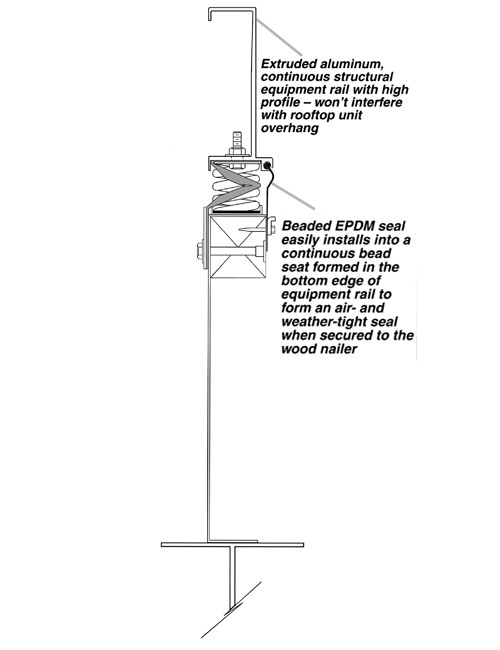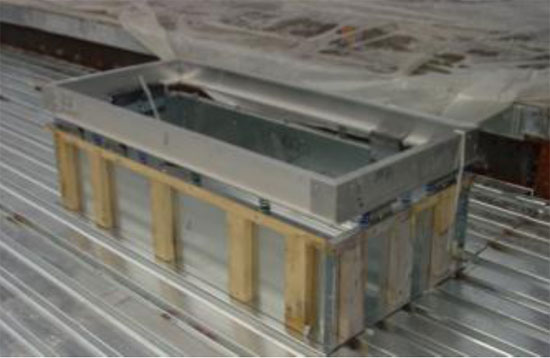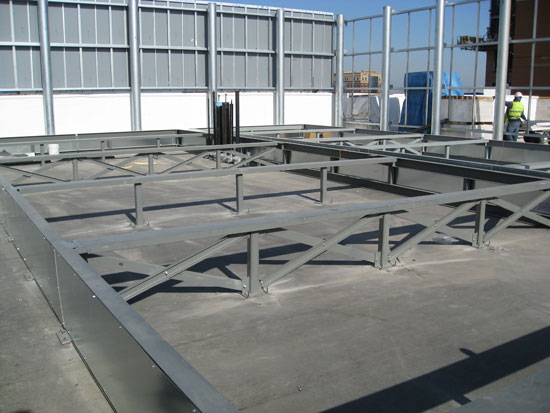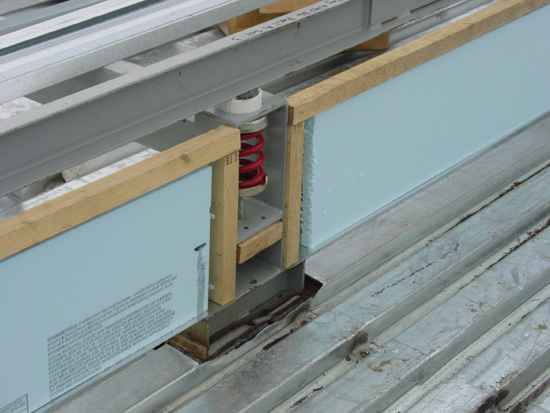Understanding Seismic and Wind Restraints
 |
 |
Typical all-in-one curb and vibration isolation restraint for under-20-ton packaged rooftop units that meets seismic and wind load requirements. Unless specified otherwise, typical restraints are selected to resist 43-psf horizontal and 25-psf vertical wind loads. Images courtesy of Kinetics Noise Control |
Selecting Wind Restraints
The same types of restraints and anchors used for seismic conditions are also used for wind applications. As with seismic restraints, the selection of wind restraints is most easily and typically performed by the manufacturer of the restraints.
Information Needed by the Manufacturer of Wind Restraints
From the first sheet of the structural and architectural drawings.
- The applicable building code or codes. (Cited above.)
- Exposure category.
B. Urban/suburban areas with numerous closely spaced obstructions having the size of a single-family house or larger.
C. Flat, open terrain, open hurricane zone.
D. Flat, open non-hurricane zone. - Design wind speed.
Wind speed used in design is often referred to as a “3-second gust” which is the highest sustained gust over a 3 second period having a probability of being exceeded per year of 1 in 50 (ASCE 7-05). Windspeedbyzip maps out the design wind speed as suggested by ASCE 7-05 for the United States. Future wind speed requirements listed in the 2012 IBC are higher. - Mean building height.
Mean building height is the vertical distance from the grade plane to the average height of the highest roof surface.
Required equipment information:
- Equipment cut sheets with complete dimensions and, if applicable, mounting locations.
- Operating weight of the equipment.
- Dunnage and support steel height, if applicable.
- Structure that the equipment is attached to, for example, concrete, wood or steel.
Great care must be taken in the design, selection, and installation of supports and restraints for roof top curb mounted equipment since, as mentioned above, equipment that is mounted on the roof of a building will have design seismic forces that are three times larger than a similar piece of equipment mounted on grade.
 |
Non-isolated seismic/wind restrained roof curb. Photo courtesy of Kinetics Noise Control |
 |
Example of a seismic/wind restrained vibration isolation roof. Photo courtesy of Kinetics Noise Control |
Conclusion
Increasingly rigorous code requirements relating to seismic and wind restraints for MEP equipment and components are making buildings safer and reducing financial losses in the event of natural disasters. But specifying restraints is a complex matter that demands mastery and experience of the several factors that determine the type and category of restraints required. Manufacturers of restraints can provide valuable input for design professionals who already have an understanding of the principles involved.
 |
Celebrating over 50 years, Kinetics Noise Control has extensive experience in designing and manufacturing innovative products to control sound and vibration. Established in 1958 as engineers focusing on sound and vibration control, Kinetics pioneered development of pre-compressed, molded fiberglass pad isolators that would be incorporated into an innovative new floor isolation system. Previous trade names of Kinetics Noise Control include Consolidated Kinetics and Peabody Noise Control. www.kineticsnoise.com |








